A couple of months ago, I wrote a column about Albert Pujols and the Cardinals and the practicality of a reconnection.
Without getting into all of that again, I’ll just offer this: In discussing why there was at least some merit to the reunion I fully focused on his punishment of lefthanded pitching. I presented the pertinent numbers, and did so again in a shorter follow-up column a few weeks later. I made sure to put it out there; it was the only baseball reason to entertain such a move.
In brief: In 2019 Pujols had a .515 slugging percentage and a .830 OPS vs. lefties in 2018. His wRC+ against lefties was 112, meaning that he was 12 percent above league average offensively against them.
In 2021, Pujols slugged .603 and had a .939 OPS vs. LH pitchers with a wRC+ that was 46 percent above league average against them. And those numbers were even better after he departed the Angels and joined the Dodgers.
I didn’t include the pandemic-shortened 2020 season because Pujols hardly played. Through no fault of his own the ‘20 season was a washout for him.
But when I made the case for signing Pujols, his dominance of LH pitching was the only real factor that mattered from a baseball standpoint. I didn’t think the signing made sense because the Cardinals don’t face much lefthanded pitching, and the team’s front office was busy selling us on the idea of giving a meaningful opportunity to rookie Juan Yepez. And Yepez is absolutely a DH in waiting.
But by signing Pujols and Corey Dickerson as a probable DH platoon, it will be difficult to get Yepez the necessary at-bats at the big-league level. There’s no point in having him sit around when he could be working on defense getting a ton of at-bats at Triple A Memphis.
This is the one disappointment of the Pujols move – and again I’m talking about this on baseball-only terms. It isn’t fair to judge Yepez on a small number of rushed at bats in spring training, but that appears to be irrelevant. It’s obvious by now that the Cardinals desperately wanted to bring Pujols home, and manager Oli Marmol was leading the charge.
When Yepez was being portrayed by management as the DH-ready prospect who was set for liftoff – well, this was pretty much a fib. Perhaps Yepez will open the season with the major-league team – rosters are expanded to 28 during April – but even then, barring injury, I wouldn’t envision many at-bats for him.
We’ll see. And from a management standpoint, stashing Yepez in the minors can work to the team’s financial advantage in the long run.
And if the Cardinals were serious about going all out to win, they would have invested significant money in a full-time DH who would bring a proven track record to the job.
OK, let’s get back to Pujols…
In the spirit of examining the pros and cons of Pujols as a hitter, I think it’s only proper to look at the other side. The potential downside.
I’ve talked plenty about Pujols’ futility against righthanded pitchers. It isn’t a handsome profile. Pujols hasn’t had an above-average performance vs. RH pitching since 2016. Since the start of the 2017, in 1,470 plate appearances against righties, Pujols has batted .238 with a .286 onbase percentage and .389 slug. Overall that’s 22 percent below league average based on wRC+.
I got into this a little in Monday’s column, but my main concern about the Pujols’ signing is Marmol going away from platoon plans at DH to give Pujols plenty of at–bats against righthanders. If I’m wrong about that, I’ll apologize at the appropriate time.
Here’s the next thing I’d like to get into:
Can we trust Pujols’ performance against lefthanded pitching? Though the surface stats are brawny and impressive, should anything give us pause?
Yes.
First the good stuff, other than the slugging percentage and OPS which we’ve already cited …
Pujols hit the ball hard off lefties last season, posting a hard-hit rate of 42.2 percent and an overall barrel rate of 9.1%. Both numbers were improvements on his trend line going into 2021.
Now, the concerns:
1) In handling lefthanded pitching in 2019 and 2021, Pujols had 327 combined plate appearances. That’s on the smaller side of sample sizes. I think it’s enough to go on, but we can expand the sample to include 2017 and 2018. In 668 plate appearances vs. lefts since the start of ‘17, Pujols has a .247 average, .299 OBP and .455 slug. Nothing wrong with that slugging percentage, but overall Pujols was slightly below average (2%) against LH pitching over the past five seasons.
2) More on point is his extreme home-run percentage on fly balls. Yes, Pujols hits the ball hard. And he doesn’t get over the fence with a lot of cheapies. But in 2021 his HR percentage against lefties was out of this world. Of all the fly balls he struck against lefties, 31.7 percent went for a home run. Whoa …
That was the fourth-highest rate last season by a MLB hitter that had at least 145 plate appearances vs. LH pitchers. Here’s a reference point: in his 11 seasons as a Cardinal, during his peak years, Pujols never had a home-run percentage higher than 24.3% on fly balls vs. lefties.
The overall MLB home-run percentage on fly balls against lefties was a more modest 13.7 percent. As it’s plain to see, Pujols ventured into outlier territory with that HR/FLY rate against lefties in 2021. Can he get anything close to 31.7 percent in 2022? Doubtful. Here’s why:
3) Busch Stadium is the home of lower home-run rates on fly balls. Last season, only 10.2 percent of flies went for homers. And that includes a rate of 11.2% by righthanded batters. It was slightly higher (13.1%) for RH batters who faced LH pitching. But 13 percent is a long, long way from 31 percent. Just saying.
4) Pujols’ ground-ball rate is increasing. Last season he had an overall 46.1 percent grounder rate that was the highest of his career in a season. Against lefties Pujols’ ground-ball rate of 48.3% vs. lefthanders was tied for his career high in a season.
If utilized smartly, Pujols figures to be plenty dangerous against lefthanded pitching in 2022. But will his home-run power drop with a more standard HR/FLY rate? I’ll be keeping an eye on that in 2022.
5) I’m also aware that Pujols clubbed a homer at Busch Stadium in each of the two series that brought him here as a visiting-team player for the Angels and Dodgers. He’s always been a confident hitter in this ballpark, which opened in 2006. And his pull-heavy tendencies work well for RH batters that shoot for home runs. Last season RH hitters popped 72 homers to left field, 29 to center field, and eight to right field.
This is certain: the opposing-team managers won’t take Pujols for granted – especially if Marmol utilizes Pujols in the most advantageous matchup. Not only in starting the game at DH. But also as a late-inning pinch-hitting threat.
As Braves manager Brian Snitker said this of Pujols during last season’s NLCS against the Dodgers: “You pop that lefty (pitcher) you know he’s going to come out of that dugout. You’re damn sure of where he’s at.”
Thanks for reading …
–Bernie
Bernie invites you to listen to his opinionated and analytical sports-talk show on 590-AM The Fan, KFNS. It airs Monday through Thursday from 3-6 p.m. and Friday from 4-6 p.m. You can listen by streaming online or by downloading the “Bernie Show” podcast at 590thefan.com — the 590 app works great and is available in your preferred app store.
Follow Bernie on Twitter @miklasz
Please email your “Ask Bernie” questions to BernScoops@gmail.com
All stats used here are sourced from FanGraphs, Baseball Reference, Stathead, Bill James Online, Fielding Bible, Baseball Savant and Brooks Baseball Net unless otherwise noted.
For the last 36 years Bernie Miklasz has entertained, enlightened, and connected with generations of St. Louis sports fans.
While best known for his voice as the lead sports columnist at the Post-Dispatch for 26 years, Bernie has also written for The Athletic, Dallas Morning News and Baltimore News American. A 2023 inductee into the Missouri Sports Hall of Fame, Bernie has hosted radio shows in St. Louis, Dallas, Baltimore and Washington D.C.
Bernie, his wife Kirsten and their cats reside in the Skinker-DeBaliviere neighborhood of St. Louis.



